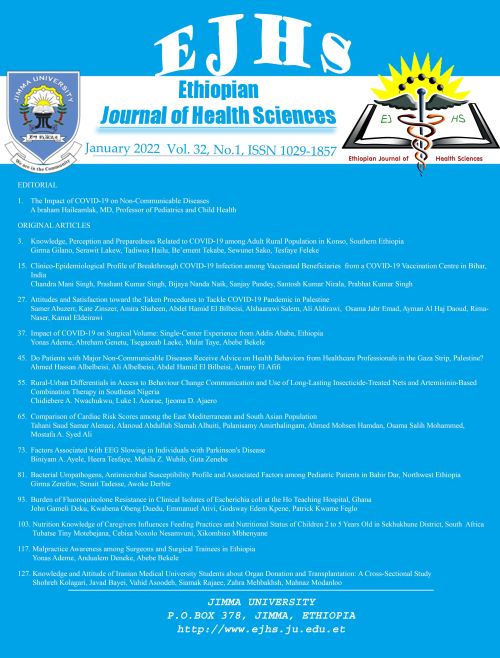Main Article Content
Burden of Fluoroquinolone Resistance in Clinical Isolates of Escherichia coli at the Ho Teaching Hospital, Ghana
Abstract
BACKGROUND: The growing burden of antibiotic resistance is a threat to the management of infections. Infections by Escherichia coli are routinely treated with fluoroquinolone antimicrobial agents. Due to their frequent use, there has been increasing resistance to these drugs. We set out to determine the burden of fluoroquinolone resistance among clinical E. coli isolates at the Ho Teaching Hospital, Ghana.
METHODS: This was a cross-sectional study conducted from July 2018 to June 2019. One hundred and thirty-five E. coli isolates were cultured from various clinical samples. Antimicrobial susceptibility testing was performed using the Kirby-Bauer disk diffusion method with discs of nalidixic acid (NAL), ciprofloxacin (CIP), norfloxacin (NOR) and levofloxacin (LEV). Deoxyribonucleic acid (DNA) was extracted from the resistant isolates for the detection of fluoroquinolone resistant genes by polymerase chain reaction.
RESULTS: Ninety of the 135 isolates (66.7%) were resistant to at least one of the four fluoroquinolone drugs investigated. Resistance to NAL, CIP, NOR, and LEV was 51.0%, 51.1%, 38.8% and 35.7% respectively. Out of the fluoroquinolone resistant isolates, 69 carried one or more fluoroquinolone resistant genes. The predominant resistant genes were aac(6’)-Ib-cr (48.9%) and qnrD (25.6%). Seven of the isolates carried both qnrS and aac(6’)- Ib-cr genes. Two isolates carried 5 different fluoroquinolone resistant genes.
CONCLUSION: High prevalence of resistance to 4 fluoroquinolone drugs was recorded with associated resistant genes. This is a threat to current efforts to control the spread of antibiotic resistance and calls for concerted efforts to curb the spread of these resistant organisms.




